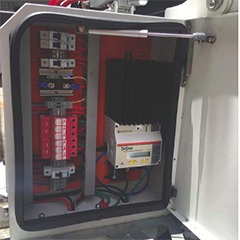Bill Mellema, Director of Engineering and Brad Berwald, Product Manager and Technical Training Manager, at Morningstar Corporation, met up with PES to bring us up to date on the solutions offered by this innovative, employee owned company. Here the workers are proud of their products and provide only the highest quality and efficiency to the market. They have a balanced portfolio: residential, industrial and off-grid and keep a keen eye on the markets to see where improvements are possible. Read on, you’re sure to be impressed.
PES: Hi Brad and Bill, it’s a great pleasure to to welcome you to PES Solar. We have worked with your company for quite a few years now, and are sure our readers would be interested in a brief overview of Morningstar, so shall we begin with that?
Brad Berwald: So, we’ve been the solar charging experts for the off-grid PV industry for over a quarter of a century, and, unlike many other companies, have the same management and ownership. In fact, we’re employee-owned, which is the main reason we’re so focused on maintaining the industry’s lowest hardware failure rate and highest reliability. Our own individual reputations ship with every product.
Bill Mellema: We have over 20 patents and a dozen trademarks, leading the field in off-grid power conversion technology. Our low turnover and long-term team approach foster an environment where technical creativity thrives, resulting in an IP portfolio that’s very broad and comprehensive for a company our size. Morningstar’s patents cover areas which include thermal engineering, mechanical design, charging and control, advanced electronic topologies, safety systems, and more.
PES: With energy storage becoming such a growing area, how has that affected what system designers are looking for in solar charge controllers and inverters?
BB: The growth of energy storage affects power electronics in a number of ways. For one, system set-up is more complex. Installers have to deal with variables such as absorption, float, equalizing voltages, time and temperature compensation factors, high-voltage disconnect/reconnect for the battery and low-voltage disconnect/reconnect for loads, all critical settings to battery health and longevity. These are highly important, because with the costs of PV modules getting lower than ever, a battery bank is now often the single most expensive part of a system.
There’s a saying in solar installation: ‘any problems in your design you’ll learn about in your batteries first.’ No one wants to learn that very expensive lesson! Advanced battery chemistries also present new challenges. For example, lithium batteries can be damaged if one attempts to charge them under cold conditions. So, it’s incumbent on the systems’ electronics, most notably the charge controller, to be ‘smart’ enough to anticipate errors and minimize any problems.


























